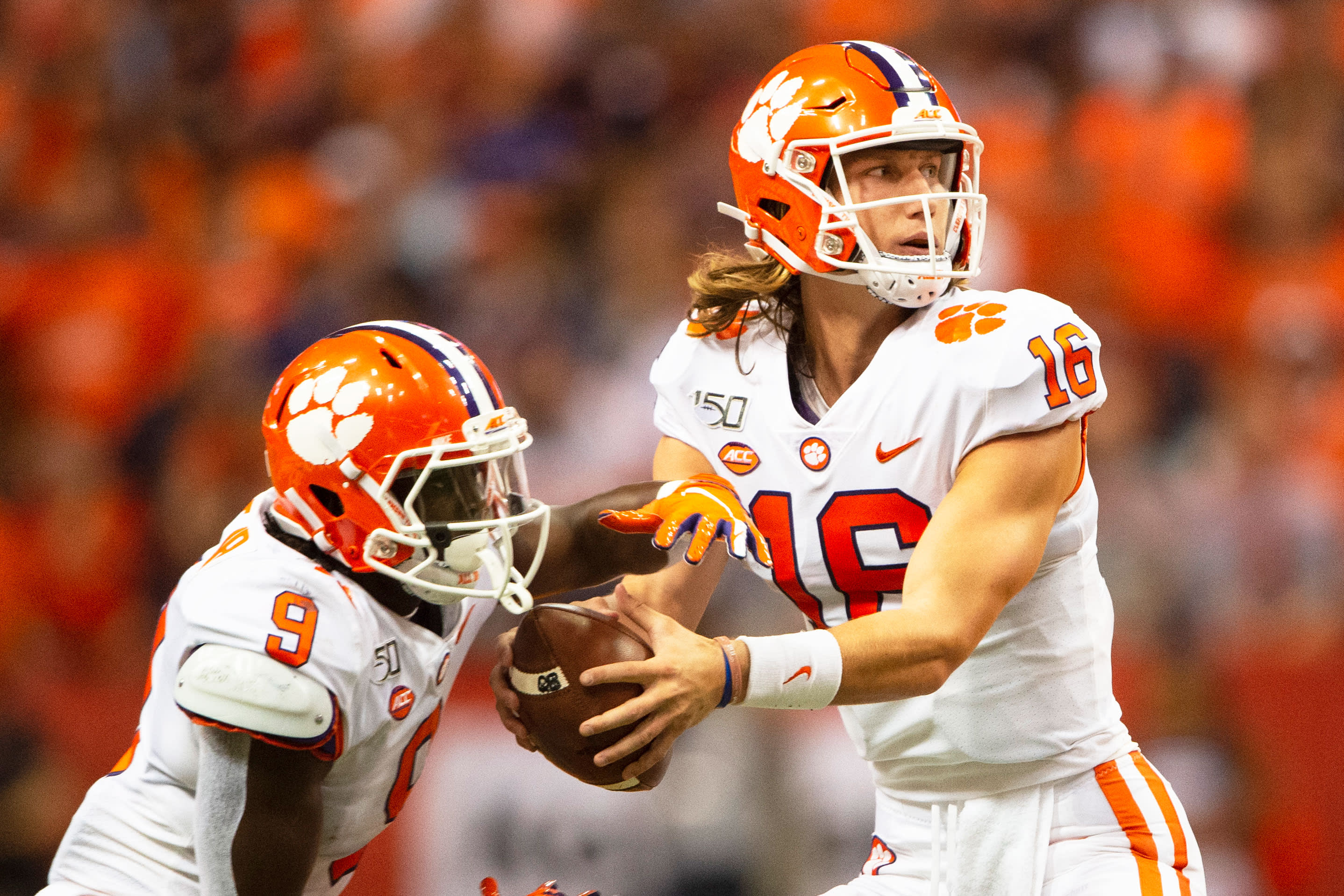
The debate over whether the top college athletes should be paid more like professional players continues to rage, even as those athletes now have more avenues for making money while playing collegiate sports.
While opponents argue that college football and basketball stars receive free college tuition, stipends and a platform to showcase their skills for professional teams, proponents of paying college athletes point out that those players’ skills bring in more than $14 billion in annual revenue for college sports programs, and only a fraction of that money goes to the players.
A new study from the National Bureau of Economic Research looks to get to the bottom of just how much money the top college football and basketball stars would be making per season if they were compensated similarly to professional players, whose collective bargaining agreements with professional leagues assure them a roughly 50% share of league revenue.
According to the study, paying college stars similarly to professional players (by sharing half the revenue from their games, and paying high-profile players a higher percentage) would mean that top quarterbacks, like Clemson’s preseason All-American signal caller Trevor Lawrence, would earn up to $2.4 million per season, on average. A star wide receiver would earn up to $1.3 million per year, according to NBER.
The study also found that every starting player on a basketball team for schools in the five biggest collegiate athletic conferences (the ACC, the Big 10, the Big 12, the PAC-12 and the SEC) would earn between $800,000 and $1.2 million per season, depending on their school and the percentage of revenue that was shared with each player.
Of course, while the NCAA voted in October to allow college athletes to profit off of their name, image and likeness (opening the door for them to earn money from endorsements or branded social media posts), collegiate players have historically been barred by the NCAA from being directly compensated by their schools in an attempt to preserve amateurism rules.
What’s more, because student-athletes are not technically employees of their schools, they are not covered by federal employment laws that would allow them to unionize and negotiate collective bargaining agreements with the NCAA as professional athletes have done with their respective leagues.
However, the NBER study’s salary estimates “represent a plausible benchmark of what athletes could negotiate if they could engage in collective bargaining,” the nonprofit research organization said in the study.
For instance, if football and basketball players at schools in those five biggest conferences (commonly known as the “Power Five” conferences) were able to negotiate a collective bargaining agreement that included sharing 50% of their teams’ revenues, the NBER study finds, the average salary for football players would be $360,000 while the average basketball salary would be $500,000.
Instead, the NBER study finds that “less than 7%” of the revenue from college football and college basketball — which includes multi-year television broadcast deals worth billions of dollars — ends up going to those sports’ athletes in the form of academic scholarships and stipends to cover living expenses.
The debate over collegiate athletes’ rights to unionize and negotiate the sort of collective bargaining agreement the NBER study hypothesizes has picked up since the coronavirus pandemic shut down or postponed most major sporting events. Proponents of sharing revenue with college athletes point to the additional risks that athletes who play college football or basketball this year will face amid the coronavirus pandemic as evidence that those athletes should receive greater compensation for their skills.
The Big 10 and PAC-12, both Power Five conferences, have already postponed their upcoming college football seasons after dozens of athletes said they would opt out of a season (though, many other players have said they want to play). But both players opting out and those who say they want to play this season have supported the idea of a union for college athletes that could advocate for players and negotiate safety protocols with the NCAA and colleges.
Check out: Americans spend over $5,000 a year on groceries—save hundreds at supermarkets with these cards
Don’t miss:
The NCAA just released new guidelines for college athletics—here’s what schools are doing
Majority of college students say student-athletes should be paid, survey finds




